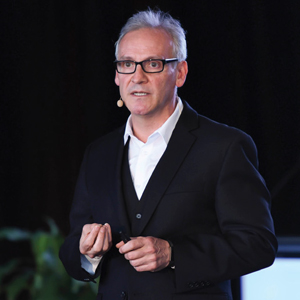THANK YOU FOR SUBSCRIBING
Editor's Pick (1 - 4 of 8)

Digital Disruption and the Future of Capital Markets
Kenneth Lee, Head of Primary Bond Markets, Natixis Asia Pacific


Kenneth Lee, Head of Primary Bond Markets, Natixis Asia Pacific
On the back end, it’s being used to aid employees, automate processes, and pre-empt problems. From a regulatory perspective, it’s likely that the supervisory arms of regulators will begin to use AI technology to monitor and process data from market participants, allowing greater oversight and assessment of market trends and risks.This has the potential to allow regulators to react more quickly to market developments. Powerful levers
From these brief examples, it’s clear that technology and digitalization are the most powerful levers that a bank has to address on challenges driven by the operating environment, such as increasing regulatory requirements, evolving client needs and expectations, intensifying competition for talents, on-going pressure on returns, and the emergence of new offerings. Despite this, a survey by ASIFMA and PwC in March 2019 demonstrated that just 26% of financial institutions felt that the current investment in technology was enough.
At Natixis, our strategy is centered around serving our clients’ needs, and so internal agility and an ability to adapt and evolve are key to being able to respond to their needs. In this respect, our New Dimension plan (2018- 2020) was established to deepen the transformation of our business model, and our investment in digitalization is a key component of this. We are determined to differentiate ourselves by drawing on our teams’ widely recognized expertise to become a leading player and our clients' first point of reference. We aim to provide the best possible experience, and ultimately the best possible financial solutions to our clients.
E-Maps is one such example of technology that came to fruition as a result of collective knowledge pooled together to create a customer-centric solution. The product itself is a real-time pricing tool that shows the price of some 20 financial products using over 350 international equity and index underlyings. By applying this tool, clients can price different payoffs within the structured product range, in just a few clicks. It also offers a range of investment ideas in relation to current financial market news and allows clients to compare the performance of the different products presented.
Culture and mindset
The ability to provide solutions that meet customer needs ultimately requires a customer-centric mindset. Our end goal is to improve our clients’ experience by making our services simpler, more immediate and more personalized. While focusing on the development of the technology is all well and good, the new opportunities that they bring can only be realized if we have a corporate culture and mindset that supports the vision. Technology is not the solution in itself, but rather one of the means.
A recent poll conducted by the CFA Institute shows that half of the finance professionals in Asia Pacific expect their jobs to either disappear or change substantially over the next decade, with some of their works taken over by AI and other technologies. Research analysts, sales, traders are being quoted as some of the jobs that are most likely to become extinct. Yet, the number of finance professionals are anticipated to grow during this same period. India is expected to see the highest growth at 33%, followed by China at over 25%. Even the US and Hong Kong are forecasted to expand 9% and 4% respectively. Digital disruption is not a threat but it offers new opportunities for all of us. We would need to prepare and train our staff differently – and it’s not just about teaching them new skill-sets to manage more complicated tasks which AI cannot perform, but also focusing more on honing their “soft” skills rather than their “hard” skills.
Technology and digitalization look set to be one of the biggest drivers of change to come – whether that be the way we work together, or how we work with our clients. The successful banks of the future will be those that are more flexible and agile to change and innovation.
See More: Top Capital Market Tech Solution Companies
Weekly Brief
I agree We use cookies on this website to enhance your user experience. By clicking any link on this page you are giving your consent for us to set cookies. More info
Read Also
Navigating Compliance Challenges in ESG AML and Digital Onboarding
Chuan Lim Ang, Managing Director and SG Head of Compliance, CIMB
A Vision for the Future: Automation, Robotics, and the Smart Factory
Joe Tilli, State Industrial Automation Sales Manager, Lawrence & Hanson
The Rise of Hyper Automation
Erdenezaya Batnasan, Head of IT End-User Support Service Department, Khan Bank
Transforming Business Operations with Robotic Process Automation
Simon So, CMGR, MCMI, Regional Head of Digital Solutions, Richemont Asia Pacifi
Combining Automation with AI to Achieve Human-Like Interaction
Kain Chow, General Manager, Technology & Transformation, New World Development Company Limited
Implementing RPA - 5 Ultimate Prerequisite
Indra Hidayatullah, Data Management & Analytics Division Head, Pt. Bank Tabungan Negara
Incorporating the power of recognition into our vendors' sustainability journey
Cynthia Khoo, Head, Central Procurement Office, OCBC Bank (Malaysia) Berhad
Elevating Guest Experience with Data
Clive Edwards, Senior Vice President, Operations, Capella Hotel Group





















